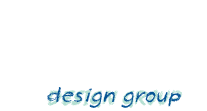Using a printing press rather than a computer and printer can be both fun and inventive, according to several professors.
Combining mind and hands in activity through letterpress will completely take one’s mind off any troubles, said Ting Wang-Hedges, assistant professor of graphic design at the University of Arkansas at Fort Smith. The activity was so relaxing, she said she did not even give thought to what color or type she would use in the design.
“Letterpress is a printing process that has been in existence since the 1450s, when Johann Gutenberg developed moveable type and revolutionized the printing industry,” said Katie Harper, associate director of graphic design, letterpress and book arts at UAFS.
Wang-Hedges said she does a lot on the computer, but the possibilities with letterpress are so many. You cannot get the texture on a computer that you can get with the letterpress, she said.
Mervi Pakaste, letterpress artist and associate professor of graphic design at Kansas State University, agreed, saying letterpress forces a person to “let go of the control ... and make more loose, fun things.”
It is great to get off the computer and do something with your hands, she said. Letterpress provides the tactile opportunity to play with things you cannot control 100 percent, she said. The type might move, or the color might be altered, she said.
“It is more experimental,” Pakaste explained.
A graphic designer by trade, Pakaste said she is interested in book arts and letterpress, and she described letterpress as “a fusion of art and design” unlike regular design. It is a “different way of thinking about design,” she said.
Pakaste will share her ideas about letterpress with students and the community in early September, Wang-Hedges said. Pakaste will work with UAFS graphic design students during classes Sept. 7, and she will give a free public lecture at 5:30 p.m. Sept. 7 in the Windgate Art and Design Building Theater on the UAFS campus. A reception will follow at 6:30 p.m.
Pakaste also will conduct a free public workshop from 10 a.m. to 4 p.m. Sept. 8, with a one-hour break for lunch, Wang-Hedges said. The workshop will be entitled “What’s So Punny About It?” The free event is open to the community, Wang-Hedges said. Workshop participants do not need to know how to do letterpress to participate in the class, and they do not need to provide any materials, she said. They just need to be prepared to come and “have fun.” Anyone interested in attending the workshop should contact Wang-Hedges at ting.wang-hedges@uafs.edu by today.
The workshop will provide a great opportunity for high school art teachers to “bring great inspiration” into their classrooms, Wang-Hedges said.
Underground Ink, the university’s letterpress and book arts studio, was formerly located in the basement of the Gardner building, hence the name, according to Harper.
The current letterpress room is populated with “three Vandercook presses, two imposing tables, 13 cabinets of metal and wood type, an Andersen-Vreeland platemaker and a Jacques board shear,” Harper said.
Also available — and usable! — is the nearly 100-year-old Chandler and Price 8-by-12 letterpress, which was built in 1923, Wang-Hedges said.
Pakaste was Wang-Hedges’ graduate school professor at Kansas State University. Wang-Hedges said she thought Pakaste might be interested in the letterpress room and contacted her.
Pakaste said she does not consider herself an expert on letterpress by any means. She said she is “just getting her toes wet.”
Pakaste learned a lot and was especially impacted by Hatch Show Print in Nashville, which she described as a working museum with a “huge fantastic collection,” and Hamilton Wood Type in Two Rivers, Wis., which she said was formerly a factory that made wood type and now showcases a historical collection.
Examples of Pakaste’s letterpress work, “Mapping Meaning: Works by Mervi Pakaste,” are currently on display in the second floor gallery of the Windgate Art and Design Building, located at the corner of Kinkead Avenue and Waldron Road. Her work will be on display through Sept. 16. It is open to the public, and admission is free. The collection on display includes some new and some old letterpress works, Pakaste said.
“Her sense of fun with puns and sly connotations permeate through her work,” according to an exhibit flyer, and stems from her Finnish background. Many of the idioms in the English language, which is not her native language, made no sense to her, Pakaste said.
She is very “precise ... with her use of innuendo often found” in the English idioms, the flyer states. “She cuts through the many layers of meaning with a very humorous razor” and plays “with the subtleties of meaning in language.”
Pakaste is “so funny and clever,” Wang-Hedges added.
Original article on the Times Record.
